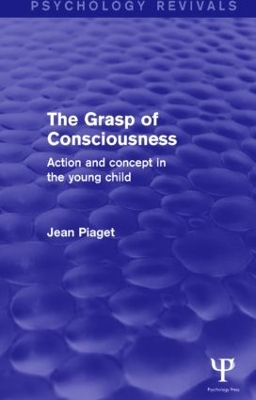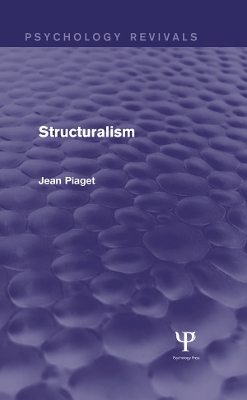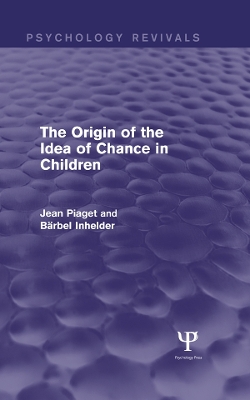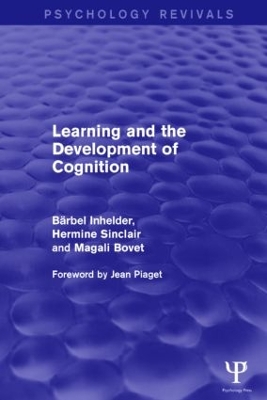Psychology Revivals
6 total works
In the course of their researches for Mental Imagery in the Child (1971), the authors came to appreciate that action may be more conducive to the formation and conservation of images than is mere perception. This raised the problem of memory and its relation to intelligence, which they examine in this title, originally published in English in 1973.
Through the analysis primarily of the child’s capacity for remembering additive and multiplicative logical structures, and his remembrance of causal and spatial structures, the authors investigate whether memories pursue their own course, regardless of the intelligence or whether, in specified conditions, mnemonic improvements may be due to progress in intelligence. They examine the relationship between the memory’s figurative aspects (from perceptive recognition to the memory-image) and its operational aspects (the schemata of the intelligence), and stress the fundamental significance of the mnemonic level known as the ‘reconstructive memory’. This was a pioneering work at the time, presenting illuminating conclusions drawn from extensive research, together with a number of constructive ideas which opened up a fresh approach to an important area of educational psychology.
Originally published in English in 1976, the book draws on and extends our knowledge of the process of learning. The subject of the study is the general stage in a child’s development that comes between his successful performance of an activity without knowing how he did it – that is, what he had to do in order to succeed – and the times when he becomes aware of what went into that action. The book reports the results of experiments conducted at the Centre of Genetic Epistemology. Children, ranging in age between four and adolescence, were asked to perform such tasks as walking on all fours, playing tiddlywinks, building a ramp for a toy car. They were then asked to explain how they had performed the task, and in some cases, to instruct the interviewer. Their answers show a number of surprising inaccuracies in the child’s ability to grasp the nature of what he has done.
Taking a broad view of his results, Piaget shows that they reveal several stages in the gradual development of the child’s conceptualization of his actions. In analysing each stage, Piaget argues that the child’s concept of his own action cannot be considered a simple matter of ‘enlightenment’, but must actively be reconstructed from his experience. This view has always been at the core of Piaget’s work, and a new area of the child’s mental world is here given definitive treatment.
Experimental Psychology Its Scope and Method: Volume VII
by Pierre Oleron, Jean Piaget, Barbel Inhelder, and Pierre Greco
First published in English in 1969, the book opens with a chapter by Pierre Oléron on intellectual activities. These fall into three groups: inductive activities (the apprehension of laws, relations and concepts), reasoning and problem solving. It describes typical methods and essential results obtained by relevant experiments.
There are two chapters by Jean Piaget and his collaborator Bärbel Inhelder. The first, on mental images, breaks new ground: it describes original experiments carried out by Piaget and associates with children of various ages. Piaget examines the relations between images and motor activity, imitation, drawing and operations. He also classifies images according to their degree of complexity and show why children have inadequate images of some processes. The second chapter is on intellectual operations and Piaget gives a summary of the main findings of a number of his earlier books, on the child’s notions of conservation, classification, seriation, number, measurement, time, speed and chance.
In the last chapter, Pierre Gréco discusses learning and intellectual structures. He describes the work of psychologists with rats in mazes and formulating theories of animal learning. Gestalt psychology and various other interpretations are examined and Greco also pays attention to Piaget’s view of ‘structural learning’ based on experience.
Originally published in English in 1971, structuralism was an increasingly important method of analysis in disciplines as diverse as mathematics, physics, biology, psychology, linguistics, sociology, anthropology and philosophy. Piaget here offers both a definitive introduction to the method and a brilliant critique of the principal structuralist positions. He explains and evaluates the work of the main people at work in the field – Claude Lévi-Strauss, Michel Foucault, Talcott Parsons, Noam Chomsky – and concludes that structuralism has a rich and fruitful future ahead of it.
An indispensable work for serious students and working scholars in almost every field, the book is also an important addition to Piaget’s life-long study of the relationship of language and thought.
The Origin of the Idea of Chance in Children
by Jean Piaget and Barbel Inhelder
Although originally published in France in 1951 this English translation was not published until 1975. The book supplements the authors’ previous publications on the development of thought in the child and is the result of two preoccupations: how thought that is in the process of formation acts to assimilate those aspects of experience that cannot be assimilated deductively – for example, the randomly mixed; and the necessity of discovering how the mental processes work in the totality of spontaneous and experimental searchings that make up what is called the problem of ‘induction’. Induction is a sifting of our experiences to determine what depends on regularity, what on law, and what on chance.
The authors examine the formation of the physical aspects of the notion of chance; they study groups of random subjects and of ‘special’ subjects; and they analyse the development of combining operations which contributes to determining the relationship between chance, probability, and the operating mechanisms of the mind.
Learning and the Development of Cognition
by Barbel Inhelder, Hermine Sinclair, and Magali Bovet
How do children learn and how are new modes of thought developed? These questions have for years been of paramount interest to psychologists and others concerned with the cognitive development of the child.
In this major work, originally published in 1974 and reporting on over ten years’ research of the Geneva School, the authors carried the pioneering investigations of Jean Piaget to a new and remarkable level. As Piaget said in his foreword to the book: ‘The novelty of the findings, the clarity of the theoretical interpretation, and the sometimes even excessive caution of the conclusions enable the reader to separate clearly the experimental results from the authors’ theoretical tenets.’
The authors’ learning experiments with children were designed to examine the processes that lead to the acquisition of certain key concepts, such as conservation of matter and length. Detailed study of the progress of each individual subject revealed a number of features characteristic of situations that create conflicts in the child’s mind and certain regularities in the way these conflicts are resolved. Such data threw new light on the dynamics of the development of cognitive structures as well as on basic mechanisms of learning at the time.





